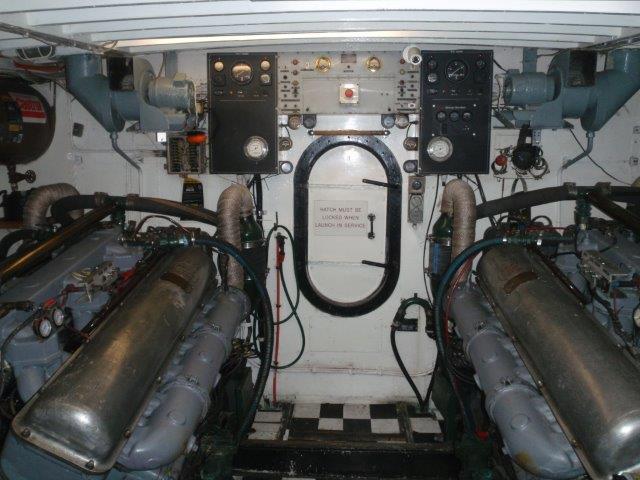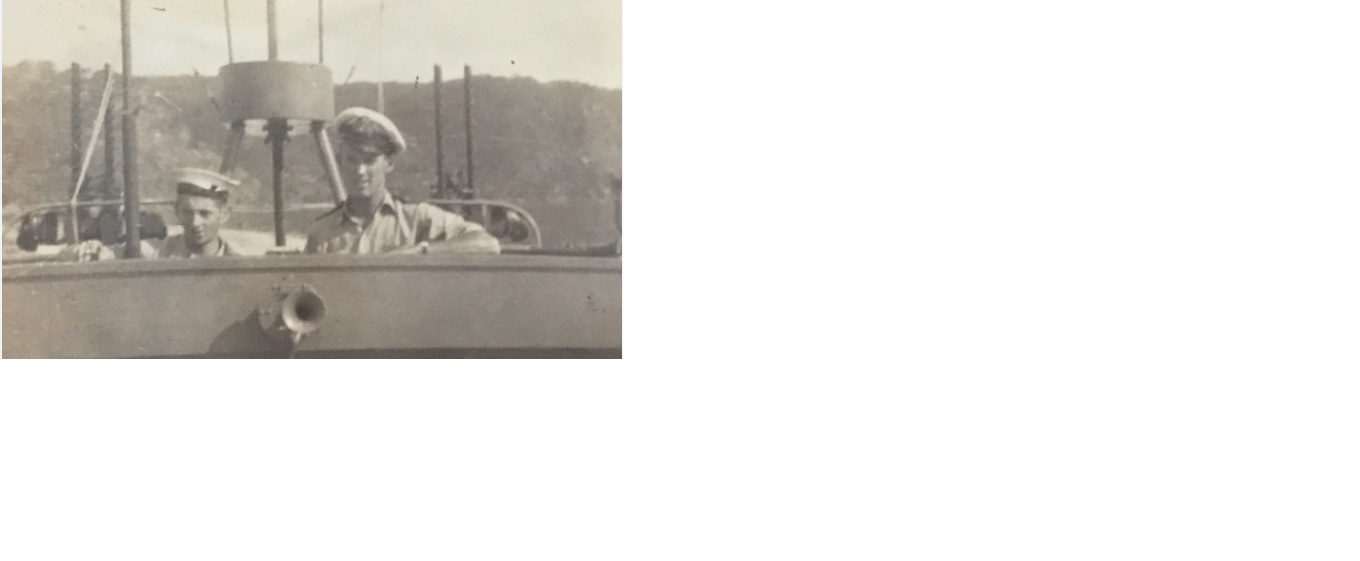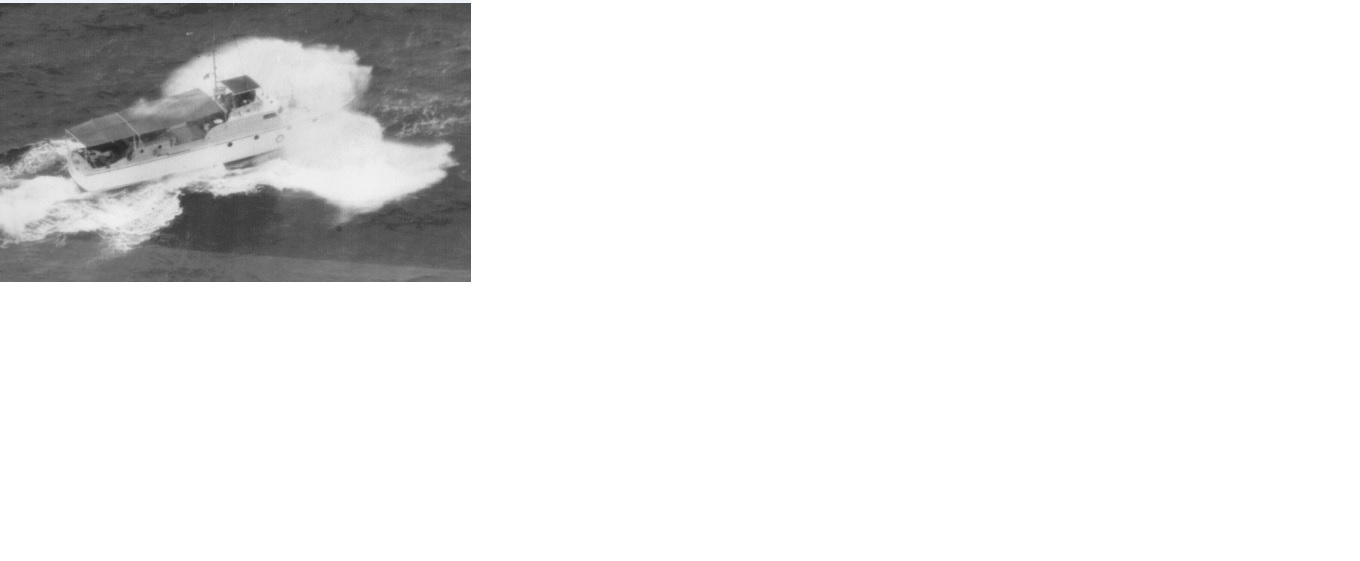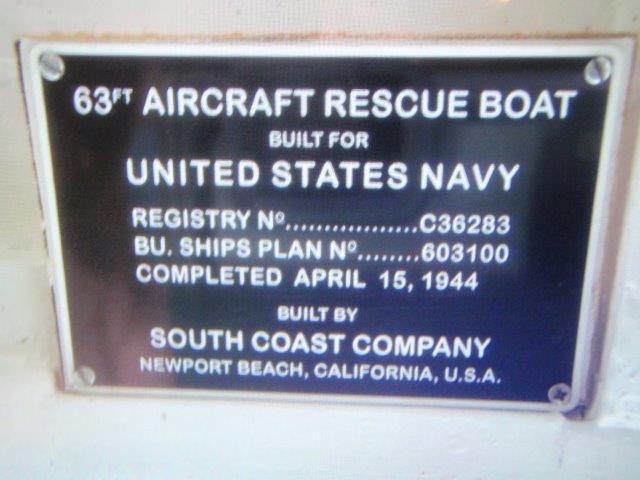IANTD Australia, has acquired the Air Sea Rescue Vessel, 02-109 for Archaeological wreck survey in Bass Strait.
This historic patrol boat was designed during World War Two for patrol and rescue operations.
Ex HMAS Air View (923) 02-109, is an American constructed 63 ft Miami class patrol boat originally built for the United States Navy.It is powered by two gasoline V 12 630HP Hall Scott Defenders .This class of vessel is commonly referred to as either an ARB, ASR ,AVR or Crash Boat depending on which country and branch of the services they served .
"Air View", US Navy Hull No C36283 was constructed in Newport Beach, California, USA, by established boat builders South Coast Company, Contract no -NObs1347 Bureau of Ships plan 603100 , under license to the Miami Boat Building Company . Implemented by the US war dept for the United States Navy ,Air Force and Army the model 314 was supplied to the Australian ,Canadian, Dutch ,English, South African and Russian Naval Forces during and post World War Two.The Royal New Zealand Navy was gifted three model 152 63 ft Miami Class vessels as US forces moved northwards to the Philippines late 1944 however they were lost in transit to New Zealand.
The Model 314, a 63 ft vessel was the most common of all the types built at the various wartime small ship builders across the USA .This type of craft was deployed to the Aleutian Islands , Mediterranean Sea, Atlantic coast and South Pacific theatres of conflict.With a crew of two Gunners, two Machinists, Radio Operator, Coxswain and Commanding Officer, this class of vessel served in forward bases . In 1944 Air View's manufacture cost was $100,000 US dollars or 30,000 English pounds ,the equivalent of 1.4 million Australian dollars today.
By early 1944 the American 5th Air Force front line was advancing towards the Japanese homeland .The Australian Navy took over the role of Air Sea Rescue operations in August 1944 from the USA .The area the Australian Navy had to cover is now Indonesia, Malaysia, Borneo and Papua New Guinea. Unfortunately Australia did not have the appropriate craft to perform the the role satisfactorily at that time.
The American 7th fleet was formed in Brisbane Australia on 3/15/43.Vice Admiral Thomas C Kincaid C-in-C approved a Royal Australian Navy request for 20 fast patrol rescue vessels on 3/4/1944. The United States Navy sponsored the RAN request .These craft were acquired through the US Bureau of Ships local production run of wartime boat builders on the west coast California USA .
Due to the urgency of getting the vessels to the war zone in the South Pacific' it was decided to requisition newly completed vessels for the United States Navy and redirect them to Australia.Thus these vessels are recorded as being built for the United States Navy and were issued with vessel numbers accordingly ,in "Air Views" case "C36283" .
Ordered on 3/4/44 Order No BAD(AUS)2714 'Air View' RAN pennant number 923 was transported on the vessel "MV Laponia" as deck cargo to Australia. South Coast Company records indicate "C36283" construction was completed on 3/15/44 and underwent subsequent sea trials prior to delivery. This Patrol boat was delivered in Sydney to the Royal Australian Navy in June 1944. She was commissioned on 11/20/44 with her first skipper Sub Lieutenant Lowell K Williams RANR (photo below) .All of the Australian Miami Class were named with the prefix "Air" such as Air Save ,Air Mercy,Air Hope,Air Faith,Air Watch etc.
This Patrol/Rescue boat was originally designed as a Submarine Chaser by boat designer Dair Long of the Miami Boat Building Company,their head office based in Florida USA.This fast planning hull design originated from the British Power Boat Company, makers of the English Motor Torpedo Boats. The famed Hubert Scott-Paine its founder designed the forerunner of what we know as the PT Boat.
The 923 "Air View" served in Northern Australia's forward bases along with 19 others of her class supplied under the WW2 lend lease agreement with the USA.These vessels were armed with 2 x Twin Lewis machine guns for aerial defence and twin depth charges for defensive purposes. Vessels of this type also operated from Australia at locations such as Balikpapan Borneo , Papua New Guinea and Dutch East Indies(now Indonesia) . The efficient rescue of Allied Airmen and Sailors was of vital importance to the Allies.
In some cases these Rescue Vessels took the final Japanese surrender in those areas at wars end .
Due to their voracious appetite of gasoline and limited endurance of 650 nautical miles, they were often towed on long ocean journey's by Bathurst Class Corvettes to forward bases or stowed as deck cargo on transport ships.
By the end of the war in the Pacific on the 15th of August 1945 the Australian Navy had in excess of 300 small ships of various designs and sizes .Due to this excess most were sold off at disposal sales however a select few were kept such as the 63ft Miami Class boats .Some vessels were kept in active service with the RAN although most were mothballed in Sydney and Brisbane.
Air View 923 with eleven of her sister ships was transferred to the Marine Section of the Royal Australian Air Force in 1949 from the Royal Australian Navy mothball fleet. Her pennant number changed from "HMAS Air View 923" to the 02-109 not to be mistaken for John F Kennedy's PT Boat the 109. Many of Air View's sister ships were sold off in the 1960's however Air View served throughout Australia's RAAF Bases for the next 35 years from Melbourne to Darwin .
In 1985 the vessel was laid up for disposal in Newcastle New South Wales as the Federal Government disbanded the RAAF Marine section which had been in existence since the RAAF was formed on the 31st of March 1921 . After 41 years of continuous service with the Royal Australian Navy and Royal Australian Air Force Marine Section Air View was disposed of in late 1985 to a private buyer Mr G Board an ex WW2 Boomerang fighter test pilot .She was the very last World War 2 patrol boat out of the original 20 ordered in 1944 in service,quite a record ! In the intervening 26 years until IANTD purchased her she had just two owners one in Brisbane and another in Sydney.Used as a pleasure cruiser after her sale from the RAAF she was well looked after.
In 2011 at 68 years old Air View was motored the 630 Nautical Miles from Sydney Harbour to her new home in Melbourne's Westernport Bay.The vessel proved her seaworthiness travelling the Tasman Sea , Wilsons Promontory and the notorious Bass Strait .
Although most have long since disappeared, Air View, constructed of Honduran Mahogany, is one of only a handful of these uniquely designed, fast planning hulls like the famous American WW2 PT Boats to survive today. Because of their similar appearance, Crash boats have portrayed PT Boats in many WW2 movies such as the 1960 Cliff Robertson PT109 and the 1997 film McHales Navy.
Built with a limited life span the US Navy could not maintain 100's of wooden boats.As a result there was the post war destruction of over 100 PT Boats and Crash Boats in the Philippines in 1946 .This led to the rarity of these vessels in the Southern Hemisphere .These craft are a testament to the quality of workmanship that the Allies demanded in the dark days of WW2.
Built for speed and excellent handling, these 63 foot rescue patrol boats or ASR's as they were designated in the RAN, saved many lives during and after World War Two.Attached to flying boat squadrons which flew Catalinas and Martin Mariner flying boats the rescue of downed pilots was one of their main roles..Miami Class boats also served in the Korean War in the 1950's and were active with the Royal Australian Air force until the mid 1980's.
Two of these vessels,Air Nymph ("Save") and the Australian built "Air Sprite" rescued many of the crew after the RAN Voyager disaster in the early 1960's. The Aircraft Carrier HMAS Melbourne, sliced the Daring Class Destroyer HMAS"Voyager" in half off the coast off New South Wales on the 10th of February 1964 with the loss of 82 lives out of a crew of 314 .As a result of their quick response the ASR,s were credited with saving many lives. More modern Helicopters eventually made the role of Air Sea Rescue boats redundant in the latter part of the 1960's.
The advent of improved diesel technology spelled the end of the high octane marine V12,s such as Packard,Hispano Suiza,American La France,Kermath,Seagrave,Allison,Merlin and Hall Scott to name a few. The Hall Scott motor company V12's production was discontinued in 1959 after the company was incorporated into the Hercules Engine Company. Some Naval forces worldwide still used Hall Scotts in Air Sea Rescue Boats and 112ft Fairmiles until the early 1970's. This was mainly due to their high power to weight ratio.The engines were maintained using new old stock parts bought in the late 1950's.In Air Views case up until late 1985. The new owners post RAAF installed diesels for economic reasons .
With thorough maintenance Hall Scott V12's are a robust highly powered gasoline engine that produce in excess of 630 hp each.A marine fitter is required in the engine room to monitor the engines while underway. Air View is still fitted with her two original 1590 US gallon/6018 metric litre self sealing fuel tanks . This gives her a range of 630 Nautical Miles at a speed of 20 Knots and 470 Nautical Miles at 30 Knots.
This vessel is currently undergoing restoration. In February 2013, her original super structure was reinstalled with a canopy to protect the hull. In August, 2014, new factory Hall Scott, 1260 hp Gasoline V12 motors were also installed.These were acquired as engines "pickled' by the American and Australian Naval forces after WW2. 'Air View' is the only Miami Class to have her original Hall Scott V12's in the Southern Hemisphere.
Below is a picture of Air Views' Hall Scott V12's installed.
Her second Skipper RAN Commodore Bryan Cleary (Deceased, link attached ) took command of her in 1946 and described her as a "Wonderful Little Ship" . It is with the help of WW2 ex servicemen and their families first hand knowledge, such as Bryan Cleary,Hub Davis to name a few that I have been able to record this piece of Australian Maritime History amazing story. Sadly the above mentioned servicemen have passed on .This was a truly remarkable generation of men and women.
Air View has recently been listed with the Australian Register of Historic Ships as one of the few if not the only original WW2 Australian crash boat .
IANTD Australasia In conjunction with Southern Ocean exploration has discovered and mapped wrecks on Australia's southern coastline such as the "Coramba","Glenelg" and "Alert" with more projects in the pipeline .
On the 31st of October 2015 Air View was taken out for her first sea trials in Western Port Victoria. With the forecast of variable winds and light showers it was decided that conditions were perfect. The new hydraulic servos were fitted as in the past the gears were engaged manually and a new charging system of alternators instead of generators were also fitted and working . As the mooring lines were cast off a sense of excitement was felt around the boat. As we eased her into the channel the gear boxes were engaged into forward and Air View slipped into Watson's inlet at 10.00 am sharp at 5.9 knots .Idling for the two kilometer channel run to deep open water the engines were checked for any issues that may have arisen,water ,fuel and oil pressure etc. The Hall Scotts massive power was felt as soon as the throttles were opened. The boat immediately responded with the speed increasing from and an amiable 5 knots to 14 knots within seconds .It is to be noted that her maximum speed with the old diesels was 10 knots at 75 litres an hour . Our maximum cruising speed for this trial was planned at 14 knots .The unmistakable note of the twin V12 exhausts was heard all round the bay . After an hour of trials we headed back to home port for some light refreshments where some minor adjustments will be carried out over the next weeks .
The conclusion was that indeed even after 72 years Air View only one month shy of her original commission in November 1944 is still capable of achieving somewhere near her original performance of 33 knots with her Hall Scotts, however a cruising speed of 15-20 knots is economically more plausible .
Like many of the boats and ships that were built with a limited wartime lifespan during the second world war it is thanks to Air View's previous owners and original construction that have enabled her to survive to the 21st century."Air View" as of 2021 is used and maintained regularly in the waters of Western Port Victoria .
More Images in the Photo Gallery Section.Attached are some links regarding Air View and a film from the Australian War Memorial depicting an ASR in Port Phillip Bay in 1963 welcoming the Royal Yacht Britannia.



